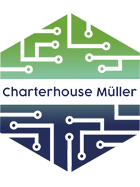
07 Jun EOL vs EoSL – What’s The Difference?
When IT vendors announce End of Life status for their products, businesses and IT administrators tend to panic. If they use that equipment, they see the announcement as the death of that hardware, and start to look at ways they can afford to replace it on short notice while avoiding unnecessary downtime. But then, the same vendors announce EoSL status for the same equipment, and things start to get a bit confusing. So today, we wanted to look at what these two terms mean, what the difference is, and what it means for your business IT equipment.
End of Life (EOL)
The term EOL (or ‘End of Life’) is used to describe hardware that has reached the end of it’s ‘useful lifespan’. This means that, while the hardware might still work, it won’t be running at full efficiency and the IT support calls for that hardware may increase. This is the point where most hardware retailers will recommend doing a hardware refresh, and replacing your hardware with the latest generation. It’s also used to describe the point when the end manufacturer stops selling the hardware, though there may still be extended maintenance options available. You could still use hardware at this stage, but most will recommend you use it as an opportunity upgrade.
End of Service Life (EoSL)
EoSL (or End of Service Life) on the other hand, stands for ‘End of Service Life’. This means that all support, including primary and extended, will be unavailable. This means no more updates, security patches maintenance support for that piece of hardware. If you want to keep using that piece of equipment past EoSL, you will need to turn to a third party provider for your maintenance needs. For a lot of companies, the security risks involved with a lack of support from the original manufacturer means this signals the end of the practical usability of the equipment.
Can You Extend The Life Of Your Hardware?
While both of these terms use the phrase ‘end of life’, that doesn’t necessarily mean that you have to stop using the equipment altogether, or that it will suddenly stop working when it hits that date. You can extend the life of your hardware in several ways, depending on the type of hardware it is. One option is to purchase extended support from the end manufacturer. Not all manufacturers will do this, but some will be willing to provide extended support past the EOL period, in six-month increments and for a premium price. This gives you the time to gather a budget for a technology refresh. Another option is to opt for a third party support model. This option might even be better for you, since third-party companies may be able to offer the same or better support services at a fraction of the cost, and with more attention to your individual needs.
What To Do with EOL & EoSL Hardware
Sadly, even if you extend the life of your hardware, there comes a time when replacing it makes more sense for a business than maintaining it. You need to know how to dispose of your EOL and EoSL hardware property when the time comes. Here, you need to make sure any and all data you’ve stored on the hardware is removed and destroyed, leaving no traces and no stray data lying around. This is not only sensible business practice – it’s also the law, thanks to GDPR. But removing the data from your hardware is about more than hitting the delete button, and that’s where most businesses fall down.
Luckily, that’s where we can shine. At Charterhouse Muller, we specialise in the secure IT asset disposal. Essentially that means we ensure all sensitive data (and in fact all data) is completely removed from your hardware at the end of its life. Once that is done, we look to optimise any remaining value within the asset – from resale to refurbishment and recycling. We work closely with you to help manage IT refreshes and make the transition to your new hardware run as smoothly as possible. If you would like to know more, please just get in touch with the team today.

